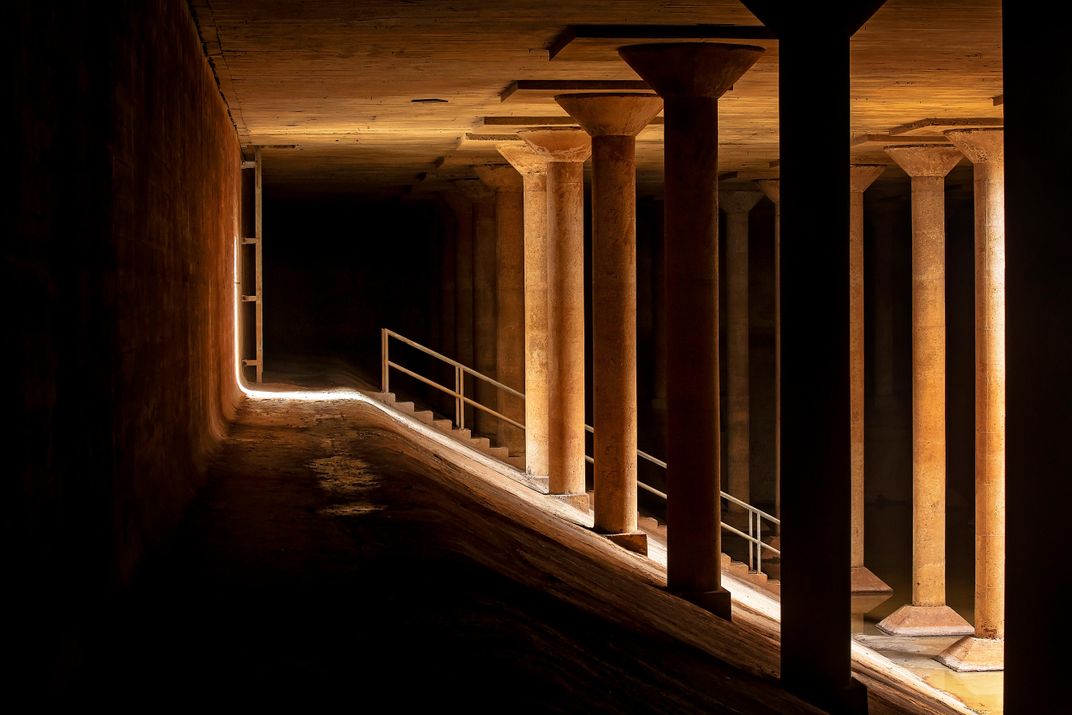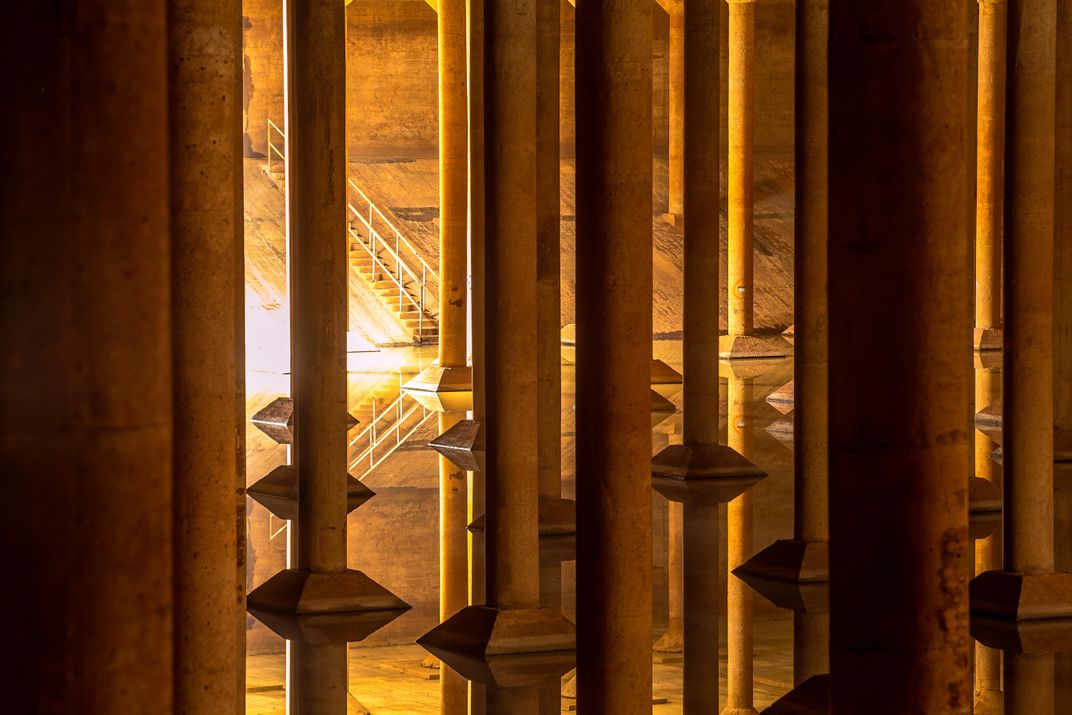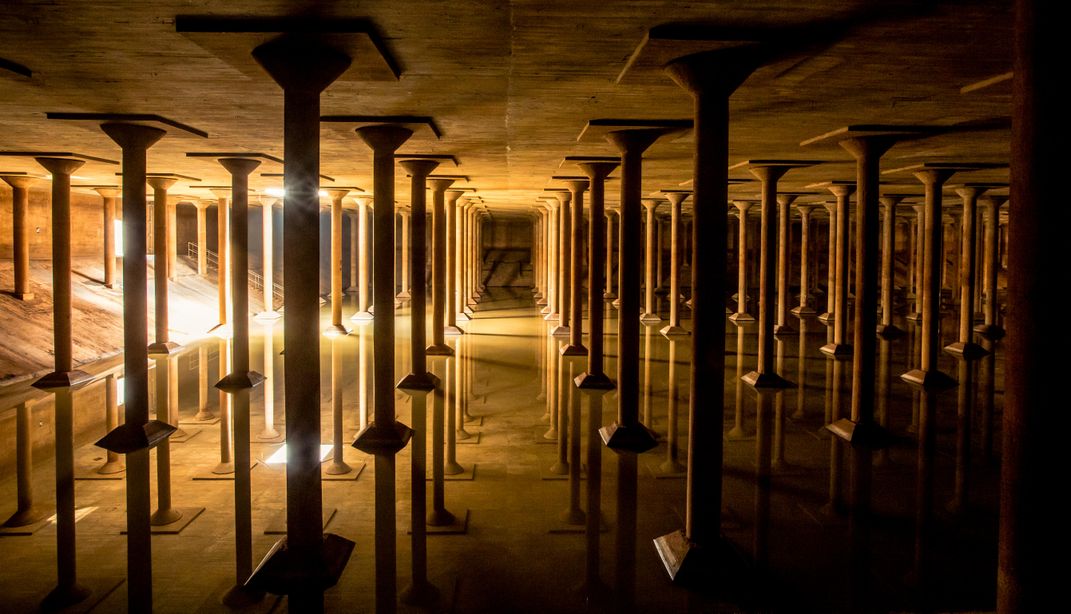Houston Opens Up Its Huge “Underground Cathedral” to Visitors
A haunting 1920’s city reservoir full of 25-foot columns and shafts of light is now open to the public
Sometime in the 1970s, the city of Houston’s 87,500-square-foot underground reservoir, which for decades served as its main source of drinking water, sprung a leak. Engineers could never figure out the problem, and the giant space was drained and decommissioned, as Jen Kinney writes at Next City.
It sat unused for decades, until the Buffalo Bayou Partnership (BBP), an organization coordinating the city’s $58 million renovation and expansion of the massive park on the edge of downtown, wanted room for more parking. The city transferred its ownership of the reservoir so that BBP could convert the space to a parking area.
But when consultants descended through the hatches into the 15-million-gallon reservoir in 2011, what they found was a beautiful hall with 25-foot ceilings and rows of hundreds of stately column reminiscent of a cathedral.
“They were just blown away by the space,” Anne Olson, president of the BBP tells Kinney.
Lisa Gray at the Houston Chronicle says the overhead hatches created beams of light streaming into the pitch black space, creating a "moody chiaroscuro that Velasquez or Rembrandt would have loved." When the visitors clapped their hands, the echoes thundered.
According to an earlier article by Gray in the Chronicle, Kevin Shanley, a landscape architect and one of the first people to “rediscover” the reservoir, was inspired by the empty room. “Basically, it’s a cathedral of light and sound,” he told her during a private tour of the reservoir. He dubbed it "the Cistern," because it reminded him of cisterns under Istanbul built by the Romans. “Can you imagine the right concert in here? Or art or sound installations? Different lights could change the look completely. Sometimes you might have water on the floor, but sometimes not.”
The name "Cistern" stuck, and now the space has been incorporated into the plans for Buffalo Bayou Park. Using a $1.7 million grant, the park has drained the few inches of water left in the reservoir, cleaned the interior, built a walkway, installed lighting and a winding entranceway into the cavern so visitors can avoid the tiny hatches and rickety ladders.
The BBP opened the space to the public earlier this month, running $2 tours through the mega structure. The organization plans to eventually implement Shanley’s vision and use the unique space for events like concerts and exhibits.
Already, the Cistern has its first artist installation—Donald Lipski's Down Periscope was installed May 10th. The functional device peers down at the Cistern from the Buffalo Bayou Park, and has a live stream capacity so that those unable to make the trip out to Houston can also enjoy a cyber view of the reservoir's expanse.


